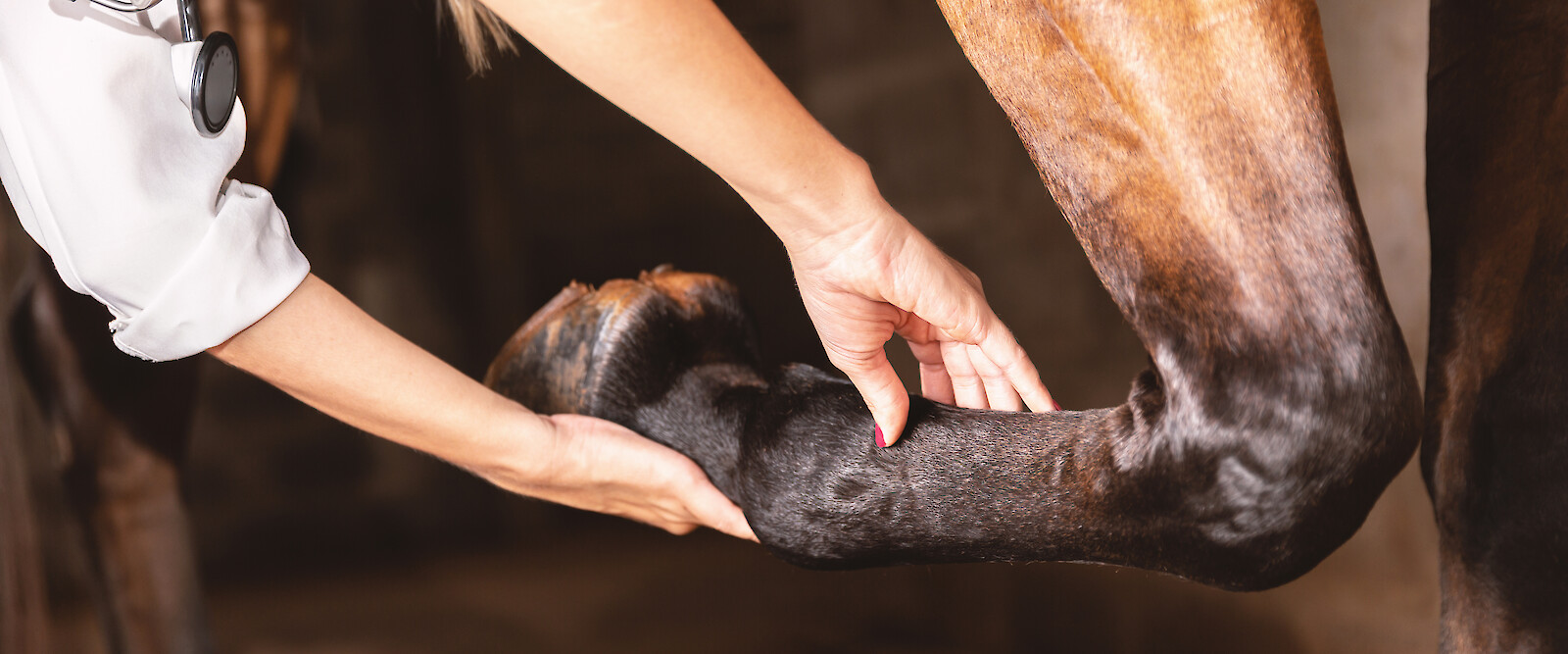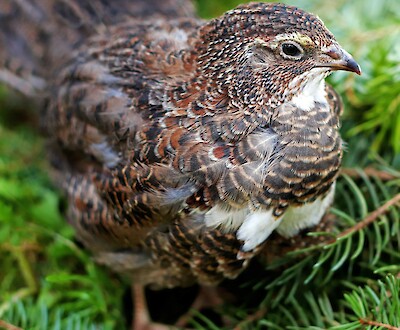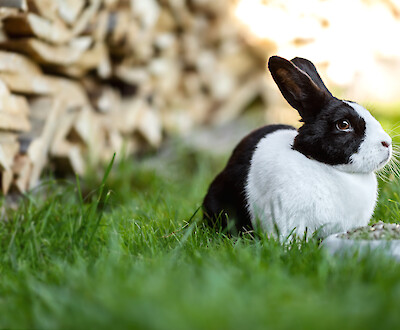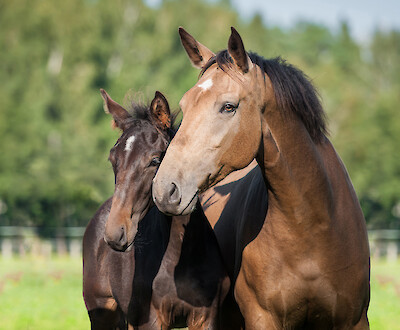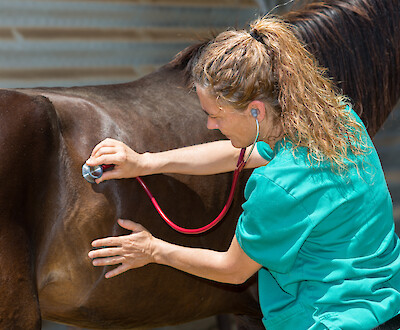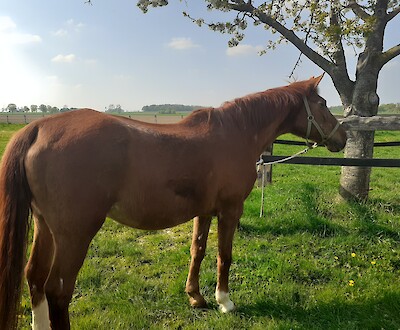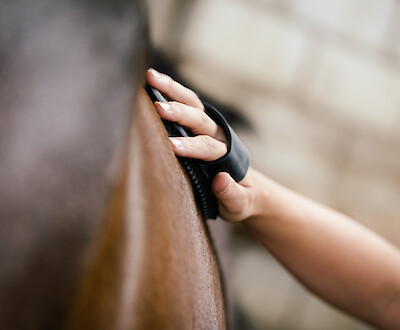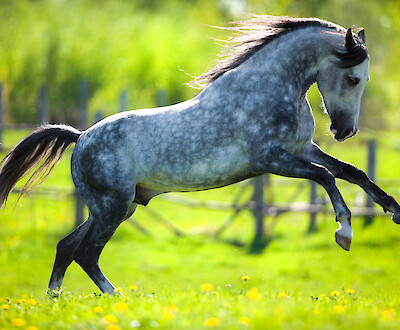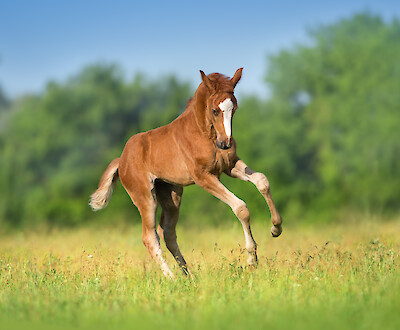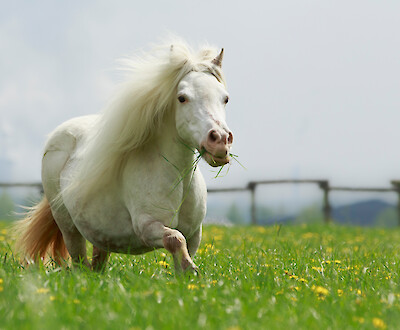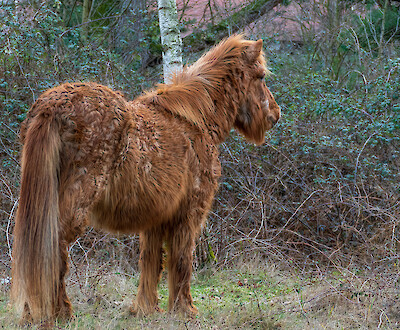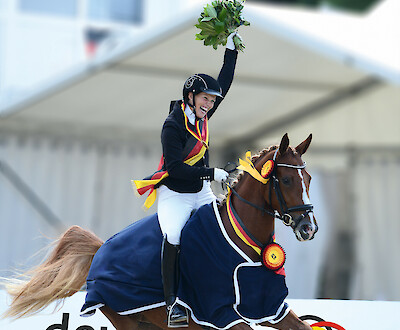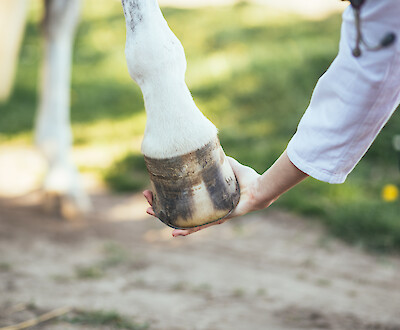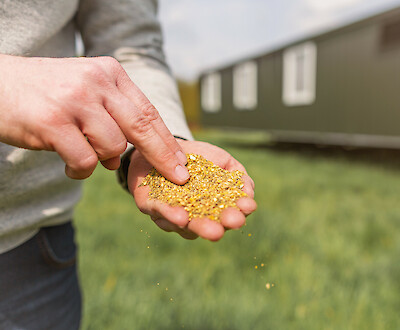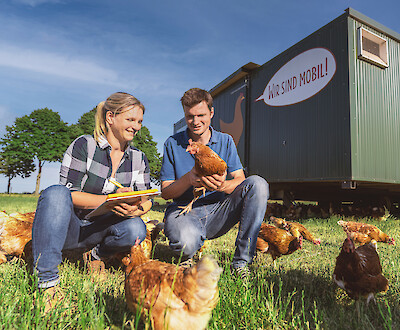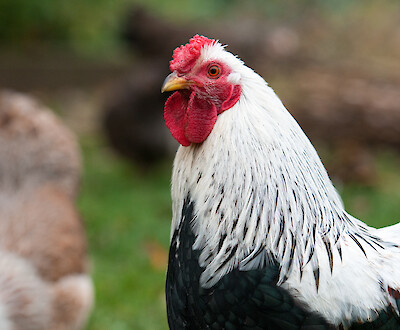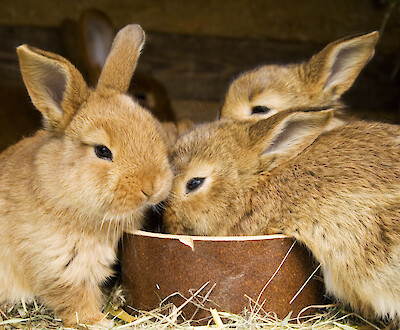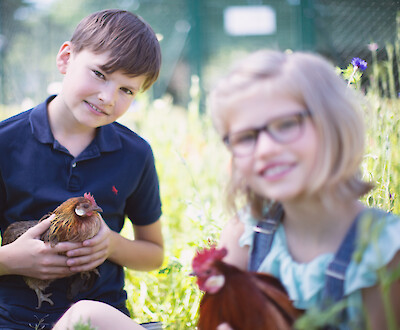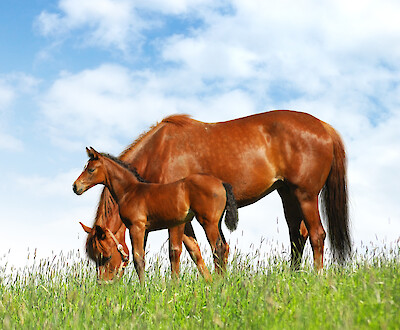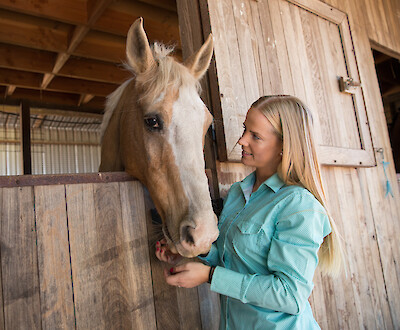Arthrosis - Horse - what to do?
Osteoarthritis in horses: Euthanise? Treat? Adapt feed!
Movement is life - nowhere is this better demonstrated than with the running animal horse. It is all the worse when movement becomes problematic. Unfortunately, restrictions of the musculoskeletal system are among the most common diseases in horses. There are many reasons for this: accidents, incorrect posture, inappropriate training or age-related wear and tear. One possible consequence is arthrosis, a degenerative joint disease that causes pain and lameness and sometimes significantly restricts your horse's mobility. Only those who know the causes and take countermeasures with the right posture and feeding can keep their horse's enjoyment of movement as good as possible.
Joints are exposed to many stresses and can wear out over time. This joint wear is also called arthrosis. In horses with arthrosis, the protective joint cartilage is damaged or destroyed. The reasons for this are manifold and range from mistakes in rearing (e.g. too little exercise, wrong feeding) and hoof treatment (e.g. malpositioning) to excessive stress in training and age-related changes or injuries (e.g. joint trauma caused by blows, kicks, falls or similar) of the locomotor system.
Once the cartilage is damaged, its functioning is restricted. Painful inflammation of the joint (arthritis) often occurs. As the disease progresses, the horse's cartilage can no longer adequately absorb the shocks to the joint. As cartilage degeneration progresses, the bones may collide. This in turn promotes joint inflammation, which can be very painful for the horse. Inflammation of the joints can become chronic if it persists for weeks and even months. In particularly bad cases, bone growths in the joint are a possible consequence, in which the joint increasingly stiffens.
Symptoms of osteoarthritis in horses
Osteoarthritis does not occur suddenly. Rather, the joint disease takes place gradually over many weeks and months. The first signs or symptoms that indicate arthrosis are, for example, the following:
- The horse does not like to move.
- At the beginning of a training session, it is stiff and has to run in first.
- The movement restrictions are more visible on wet and wet-cold days than on warm and dry days.
Osteoarthritis is associated with inflammatory processes in the affected joint. You can recognise an inflamed joint by the fact that it is warm and swollen. In addition, the inflammation causes pain, which in turn leads to relieving postures and lameness. Affected horses also do not roll much and rarely lie down to sleep because they have problems lying down and standing up. If the arthrosis does not affect the limbs but, for example, the joints of the cervical spine, your horse will be reluctant to bend and will show movement restrictions in the area of the neck.
What are the causes of osteoarthritis in horses?
Osteoarthritis in horses has many causes. Already the rearing of foals and young horses has an impact on joint health. If the horse does not get enough exercise or if the nutritional needs of the dam and foal are not sufficiently met, this can have a long-term effect on joint health. Especially in the first months of life with strong growth, when the course of physical development is set, deficits can have lasting consequences.
Overloading of already adult horses can also result in arthrosis. Triggers for this are, for example, too early, too hard or simply excessive training. After an active life, joints are often simply worn out over the years. This is why older horses are often affected by osteoarthritis. Excess weight can accelerate this process. It is true that the more weight a horse carries around, the more stress is put on the joints. This is why younger, but (heavily) overweight horses can sometimes suffer from arthrosis.
A common cause is damage caused by physical impact from outside. Kicks, falls or blows can damage tendons, ligaments and joints and impair their function. The therapy should then depend on whether permanent damage (e.g. to the cartilage) or temporary bruising occurs.
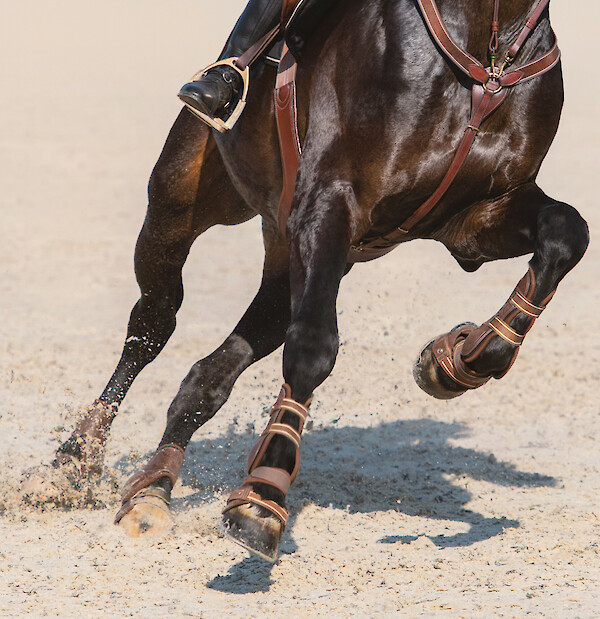
What many horse owners do not know: Feeding errors can also cause or promote the development of osteoarthritis in horses. That is why it is especially important to provide the right amount of minerals and vitamins - especially during rearing. Especially foals in the growth phase have a very high requirement. Meeting their needs now lays the foundation for strong bones, healthy joints, ligaments and tendons. To maintain cartilage tissue, the horse needs nutrients such as zinc, copper, manganese and biotin.
Other reasons for cartilage or joint stresses that can lead to osteoarthritis are:
- permanent muscle tension,
- (regular) injuries,
- Malpositioning of the limbs,
- incorrect hoof treatment and/or
- Chips (osteochondrosis dissecans, OCD).
Spavin, shell, hoof roll - many names, one disease: arthrosis
Osteoarthritis is a collective term for various joint diseases of the horse. The disease can potentially affect any joint. Arthrosis is most frequently diagnosed in the hock joint, carpal joint, fetlock joint, hoof joint and coronet bone. Depending on which joint is affected, experts use different specific terms:
-
Osteoarthritis of the hock joint (or the tight joints of the hock joint) is called "spavin" in horses.
-
Osteoarthritis of the coffin bone, coronet bone or pastern bone is usually known as "shell".
-
If the navicular bone of the horse is affected by arthrosis, it is usually referred to as a "navicular".

Diagnosis of osteoarthritis in horses
The diagnosis of osteoarthritis is made by the veterinarian. First, the joints are examined for possible swelling and mobility. A lameness examination is also carried out. If questions remain unanswered, further examinations often follow to confirm the diagnosis or to rule out diseases. These include X-rays, ultrasound or arthroscopy.
If there is still no clear diagnosis, diagnostic anaesthesia may follow. To narrow down the affected areas, individual sections of the horse's leg are anaesthetised one after the other and examined individually. In this way, the source of the pain and problem can usually be clearly localised.
Therapy: The treatment of osteoarthritis in horses
Even if the cartilage can theoretically regenerate, osteoarthritis in horses is usually not curable. This is especially true if the disease is only recognised in an advanced state. And yet: euthanising horses with arthrosis is only the very last resort. With an adapted husbandry, feeding and training management , affected horses can often live a long, good and pain-free life.
The therapy of horses with arthrosis depends entirely on the stage of the disease
With regard to training, you should make sure that you have sufficiently long warm-up phases. This will increase the production of synovial fluid and warm up the muscles. Whether you can ride a horse with osteoarthritis depends on its condition. If the horse is pain-free and does not lame at the trot, there is nothing to be said against it. However, make sure that the horse is trained in a way that does not put further stress on the remaining joint cartilage. Soft ground and shock-absorbing, orthopaedic shoeing are also recommended.
In acute phases, the horse is usually in (severe) pain. Here, the focus is on medicinal therapy with an analgesic with the aim of relieving pain. Anti-inflammatory and pain-relieving drugs are used. The vet must decide which medication should be used. Depending on how long this phase and the medication therapy last, it can be useful to change to a stomach-friendly diet.
Painkillers are known to attack the stomach lining. Therefore, one should pay even more attention to the feeding management to protect the stomach (first roughage, then concentrated feed). In addition, the targeted use of certain feeds (e.g deukavallo linseed vital, deukavallo Apple mash, deukavallo Top Gastro) can provide additional protection for the stomach lining.
Osteoarthritis in horses: Which feed helps?
Even though osteoarthritis cannot be cured, its progression can be positively influenced with the help of adapted feeding. Various feed supplements support the cartilage, can alleviate symptoms, promote joint health in the long term and thus slow down the degradation processes.
Feed additives against arthrosis in horses: Glycosaminoglycan in New Zealand green-lipped mussel meat
Glycosaminoglycan is a polysaccharide - a multiple sugar from the group of carbohydrates. Glycosaminoglycan has a positive effect on the regeneration of cartilage tissue. A particularly high concentration of glycosaminoglycan is contained in the meat of the New Zealand green-lipped mussel. Feed containing the meat of the green-lipped mussel is therefore suitable for the supportive care of horses suffering from arthrosis. An appropriate feeding (e.g. with deukavallo Joint Fit Plus) is recommended as a cure or - in severe cases - on a permanent basis.
Gelatine hydrolysate: Important ingredient in feed strengthens your horse's joints
Gelatine hydrolysate also supports bone and cartilage formation in the body and promotes the formation of synovial fluid. Gelatine hydrolysate is a specially purified, sterilised and concentrated product based on collagen, a protein (syn. protein) that makes up tendons, ligaments, bones and cartilage. Gelatine hydrolysate is also rich in important amino acids. It helps to prevent arthrosis and joint problems and to alleviate existing conditions. Regular feeding of gelatine hydrolysate can help to maintain the joint health of horses and prevent arthrosis. For this purpose, special supplementary feeds or supplements (e.g deukavallo Joint Fit), which are added to the existing ration of hay and concentrated feed.
Conclusion: What can be done against arthrosis in horses?
-
Osteoarthritis is a degenerative joint disease in which the joint cartilage is destroyed and loses its function as a shock absorber. This leads to inflammation in the joint, which gradually destroys the cartilage. As a result, pathological bone formations can restrict the mobility and functionality of the joint.
-
Signs of arthrosis include reluctance to move, long running in during training, relieving postures and lameness.
-
There are many causes of arthrosis. They range from mistakes made during foal rearing to malpositioning and incorrect hoof treatment, over- and underloading of the joints, posture and training deficits to injuries and signs of old age.
-
In order to prevent osteoarthritis in horses in the long term, adequate feeding plays an important role in addition to correct shoeing, appropriate training and sufficient exercise. Overweight must be avoided, because excessive weight puts additional strain on the joints.
-
Feeding horses food containing New Zealand green-lipped mussel meat and gelatine hydrolysate can slow down arthritis-related degradation processes in joints, support the formation of synovial fluid and cartilage tissue and thus help to maintain the horses' quality of life.
FAQ
-
Whether a horse with osteoarthritis can continue to be ridden should be decided by the veterinarian. A lame horse is probably suffering from an acute arthritis flare-up and should therefore not be ridden under any circumstances. Once the acute inflammation has subsided and the horse is free of lameness, you can ride your horse after consulting the vet.
-
In the treatment of arthrosis in horses, in addition to a fundamentally balanced supply of nutrients, a supplementation with special additional feeds has proven to be particularly effective in the area of trace elements. Corresponding horse feeds (e.g deukavallo Joint Fit) contain, for example, gelatine hydrolysate and the meat of the New Zealand green-lipped mussel as well as zinc and biotin.
-
The therapy of arthrosis depends on the respective cause. If your horse suffers from arthrosis, a comprehensive therapy should be carried out in consultation with the vet. In addition to the targeted administration of anti-inflammatory and pain-relieving medication, a diet that promotes joint health (e.g. with deukavallo Joint Fit), an adapted posture of your horse as well as an adapted training to counteract further wear and tear of the joints.
-
Osteoarthritis is a progressive, degenerative joint disease. In the advanced stages, arthrosis is not curable. In young horses, however, slight cartilage damage can heal. However, a change to an adapted diet can help slow down the progression of the disease and alleviate symptoms.
-
The risk of arthrosis cannot be completely eliminated - this applies in particular to congenital or age-related joint wear, influenced by congenital conformational deficiencies. A nutrient supply that is basically in line with requirements and the additional supply of active substances that influence the joints (e.g deukavallo Joint Fit), sufficient exercise without overloading and good hoof care are, however, a good prophylaxis against arthrosis.
-
Horses suffering from osteoarthritis are usually quite stiff. They therefore need some time to break in. They show movement restrictions, spare the affected limbs and lame. The symptoms often depend on the weather: On warm, dry days, the horses walk better than on wet or cold days.
Image sources: © Brastock Images - stock.adobe.com / © Kseniya Abramova - stock.adobe.com / © Terri Cage - stock.adobe.com
Contact person

Barbara Wefers
Contact person

